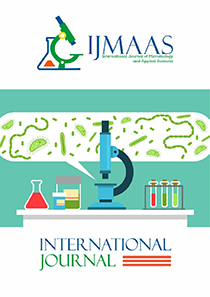Assessment of Microorganisms, Virulence Factors and Heavy Metals in Fresh Fruit Juices
Vol 3, Issue 1, 2024
KEYWORDS
Fresh fruit juice, microorganisms, virulence factors, heavy metals, microbiological safety
Abstract
Fresh fruit juice consumption has become very popular because of its health benefits. But there’s growing concern about their microbiological safety, particularly in cities like Port Harcourt. This study investigated microorganisms and heavy metals associated with fresh fruit juices sold in Port Harcourt. A total of one hundred and twenty (120) fresh fruit juices: orange, watermelon, Tiger nut and pineapple juices were sampled from ten different vendors in Port Harcourt. The microbial load and identification were determined using standard microbiological methods. The pH, Lead, Mercury and Arsenic of the juices were determined using standard method. The mean range in colony forming unit per milliliter (CFU/ml) of total heterotrophic bacterial load of the fruits was: 0.74±0.7 to 2.8±0.3×106 CFU/mL. Faecal coliform was 0.10±0.8 to 9.8±0.1×103 CFU/mL. Coliform load was 0.62±0.4 to 2.7±0.5×105, CFU/mL. Salmonella load was 0.010±0.1-11.0×104 CFU/mL while the count of Shigella was 0.25±0.3 – 10.6×103 CFU/mL, respectively. The highest bacterial load was observed in the watermelon juice while the least was in orange juice. Eight bacterial genera: Staphylococcus, Serratia, Bacillus, Escherichia, Salmonella, Vibrio, Shigella and Flavobacterium sp were isolated from the juices. Virulence results showed that 28.6-100 % of the isolates produced biofilm, 14.3-66.7% were lecithinase positive, 20-85.7% was haemolytic, 11.1-100% produced hydrogen suphide, while 85.7% of Staphylococcus sp were coagulase positive. The pH ranged from 4.7-6.65, while the Lead, Mercury and Arsenic in the juices ranged from 0.03-2.9mg/ml, 0.073-0.819mg/l and 0.0205-0.56 mg/ml, respectively. The presence of suspected pathogens and high levels of heavy metals could cause health challenges to consumers, especially to those with weak immune systems.
Current: Vol. 4, Issue 1, 2025

Call for papers
The International Journal of Microbiology and Applied Sciences warmly welcome your valuable articles for publication.
